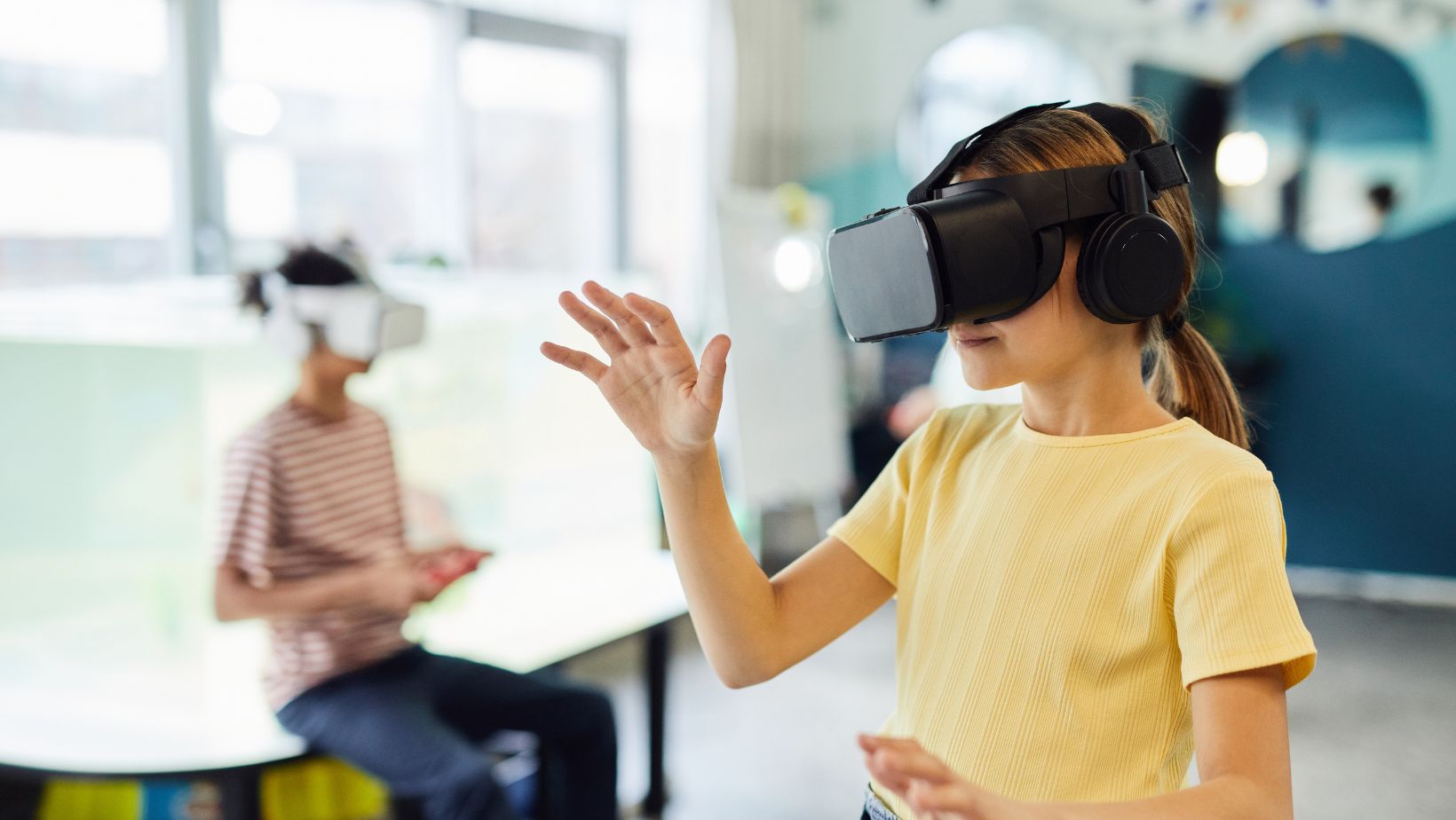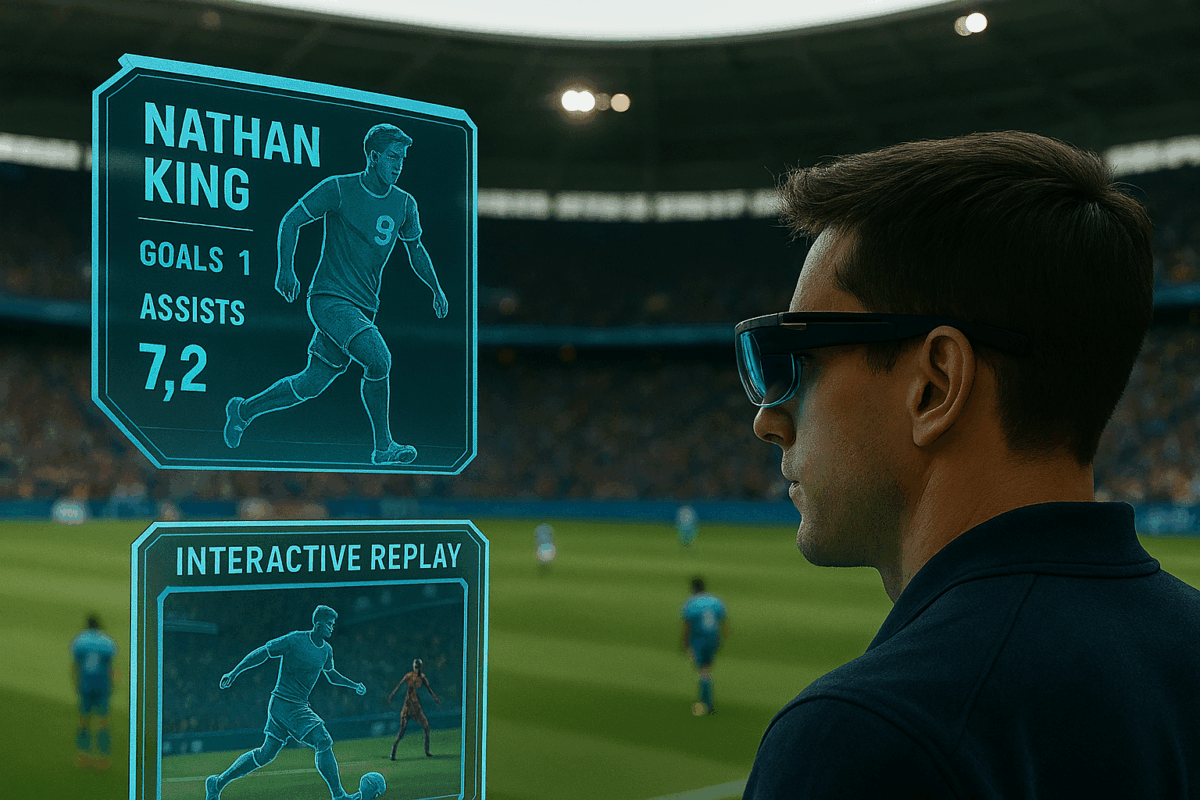Augmented reality technology has moved into sports applications over the past few years by stealth, and this development has been followed with great interest. The addition of AR capabilities within mobile platforms has created new spaces for fans to connect with their favorite sports and teams. Today’s sport apps now offer immersive experiences that were unimaginable a decade earlier, from virtual stadium tours to real-time player statistics being projected onto live games. Apps like the bizbet app have begun incorporating AR features in order to present users with a clearer visualization of odds and match data, adding to the experience of betting.
The shift towards AR-enhanced sports watching is more than an issue of technological advancement — it’s really changing the nature of how fans experience sports programming. Gone are the days of passive watching replaced with interactive experiences in which fans can learn more, participate in virtual activities, and become more immersed in the action. This is altering everything from the experience of watching the game to the analysis of player performance and team statistics.
Recent AR Applications in Sports Technology
There has been development in augmented reality sports applications from laboratory-like functionality to practical functions that add considerable value to the spectator experience. AR sports applications development details some of the ways large sports organizations are implementing these technologies on different platforms and applications.
Recent AR implementations include several main areas:
- Real-time statistics and player information overlaid on live game video
- Virtual tours of stadiums whereby fans are able to tour stadiums from home
- Interactive AR filters whereby individuals are able to pose with virtual trophies and team mascots
- 3D visualizing of tactical formations and movement of players on the field during games
- Augmented reality games that synchronize with live sporting events and game scores
The technological development of such applications has grown considerably. Modern AR sports apps are capable of offering real-time tracking of a player’s movement and overlay related statistics with minimal delay. This capability has opened up new possibilities for fan engagement that were beyond technological capabilities even two years ago.
Technical Infrastructure and Performance Requirements
The infrastructure supporting AR sports applications requires significant computational power and network bandwidth. Real-time AR features demand low-latency data transmission and sophisticated image processing capabilities. Mobile devices must process camera input, track objects in three-dimensional space, and render digital overlays simultaneously — all while maintaining smooth performance.
More networks are needed by AR sports apps, and this has necessitated the upgrade of mobile carriers. The bandwidth-intensive nature of AR features necessitates robust high-speed connections, particularly at live events when traffic is high. 5G networks made most AR features achievable for the first time and enable applications that were impossible with previous mobile data technology.
Device compatibility is also an important factor for AR sports apps. There is a trade-off between sophistication of features and ensuring that older devices are supported, even if they don’t support advanced AR. The most successful apps are those that provide scaled-down experiences across a range of different hardware setups and offer advanced features with new devices.
| Device Type | AR Processing Requirements | Network Bandwidth Needs | Battery Impact | Compatibility Level |
| High-End Smartphones | Full real-time tracking, 3D rendering | 50-100 Mbps for live features | 300-400% increase | Complete AR feature set |
| Mid-Range Devices | Reduced tracking accuracy, simplified overlays | 20-40 Mbps | 200-250% increase | Core AR functions only |
| Older Smartphones | Basic overlays, limited tracking | 10-20 Mbps | 150-200% increase | Scaled-down experience |
| Tablets | Enhanced display capabilities, stable tracking | 40-80 Mbps | 250-300% increase | Optimized for larger screens |
| 5G-Enabled Devices | Ultra-low latency processing | 100+ Mbps sustained | 400-500% increase | Premium AR experiences |
Mobile Platform Integration and User Experience
The integration of AR features into smartphone sports apps has required radical changes to application architecture and user interface design. Developers have had to balance the sophistication of AR features with simple user experiences that do not overwhelm casual consumers. The most effective implementations integrate AR features into the product so they become normal, natural additions, rather than novelty features.
User adoption patterns of AR sports features vary considerably from one age group to the next and between sports. Younger users find it easier to adopt AR features, but older users primarily utilize traditional interfaces with AR as a choice. This disparity has led to design practices that accommodate different levels of affinity in the same application.
Optimization of mobile platforms for AR features poses unique challenges. Battery use is significantly boosted when AR features are utilized, requiring careful power management to enable sustainable use lifetimes. Applications must also handle interruptions graciously — voice calls, SMS, and other interrupts should not lead AR experiences to act in ways that are frustrating to users.
“Technologically speaking, we can execute all of this [sophisticated AR applications] today. But market speaking, what people are willing to adopt and use on a regular basis, we don’t know that answer yet” – Brendan Reilly, CEO of EON Sports
AR sports app user experience design usually involves phased release of functionality. New users can first be introduced to basic AR functionality, and more advanced features are revealed as users familiarize themselves with the technology. This delays overwhelming new users while providing content for more experienced AR users.
Sports Betting Integration with Augmented Reality and Bizbet App Features
The marriage of augmented reality with sports betting sites has brought new ways in which users can visualize and interact with betting information. Traditional presentations of odds have been supplemented with AR visualizations representing probability distributions, historical performance data, and live odds movement in more naturalized formats. Websites like bizbet have begun experimenting with AR features that overlay betting information on live game streams.
AR betting choices allow shoppers to point their mobile phone at televised games and watch suitable betting data overlayed above the action. Cross-linking provides context that helps the user make more astute betting choices. The graphical nature of AR makes advanced betting information more understandable for ordinary consumers who would find traditional odds displays to be too complex.

Key AR betting integration features include:
- Real-time odds visualization overlays
- Interactive 3D probability charts
- Live market movement displays
- Enhanced statistical data presentation
- Immersive betting interface elements
- Touch-responsive wagering controls
- Visual trend analysis tools
- Contextual betting information layers
The regulatory landscape surrounding mobile betting applications continues to evolve, with various jurisdictions implementing different approaches to mobile trading and gambling consumer protection, which impacts how AR features can be integrated into betting platforms across different markets.
Interactive Betting Visualization
Advanced AR gambling applications provide interactive visualizations of the movement of the odds and the betting markets. Users can touch and adjust 3D graphs and charts to view how the odds have shifted over time and identify trends that can inform their gambling. The visualizations render otherwise esoteric statistical information more understandable and compelling.
The real-time nature of AR betting features allows for dynamic updating as games are being played. Odds changes can be shown simultaneously, and users get to see how different events in the game affect betting markets. Instant feedback gives users a glimpse of the game action-betting odds interaction fixed interfaces cannot.
Virtual Stadium Tours and Immersive Experiences
Virtual stadium tours are one of the most breathtaking applications of AR technology in the sports world. Virtual tours allow spectators to explore legendary stadiums from any part of the world, providing in-depth information about the history of the stadium, architecture, and legendary events. The extent of detail in virtual tours is most often greater than what a visitor can experience while physically present in a stadium.
Virtual stadium creation incorporates intense 3D modeling and photogrammetry. Thousands of high-definition photos and measurements need to be taken by stadium managers to create realistic virtual models. Virtual models have a range of uses other than engaging fans, including venue planning and emergency planning.
Interactive elements of virtual stadium tours add educational value to the entertainment. The visitors can view historical records of specific areas, view old videos of nostalgic moments, and even recreate different seating perspectives for upcoming games.
Real-Time Game Enhancement Features
Augmentation of real-time AR games is likely the most technically challenging application of augmented reality in sports. These systems must receive live video feeds, identify objects and players, and render relevant information in real time with no perceived lag. The computing requirements are heavy, but the reward can greatly improve the viewing experience for dedicated viewers.
Player tracking technology enables AR apps to display live statistics and data about individual athletes in real-time as it is broadcast. Audiences can point their device at televised games and instantly access the players’ profiles, performance stats, and history. The layer of information is delivered without disrupting the organic rhythm of the game.

